
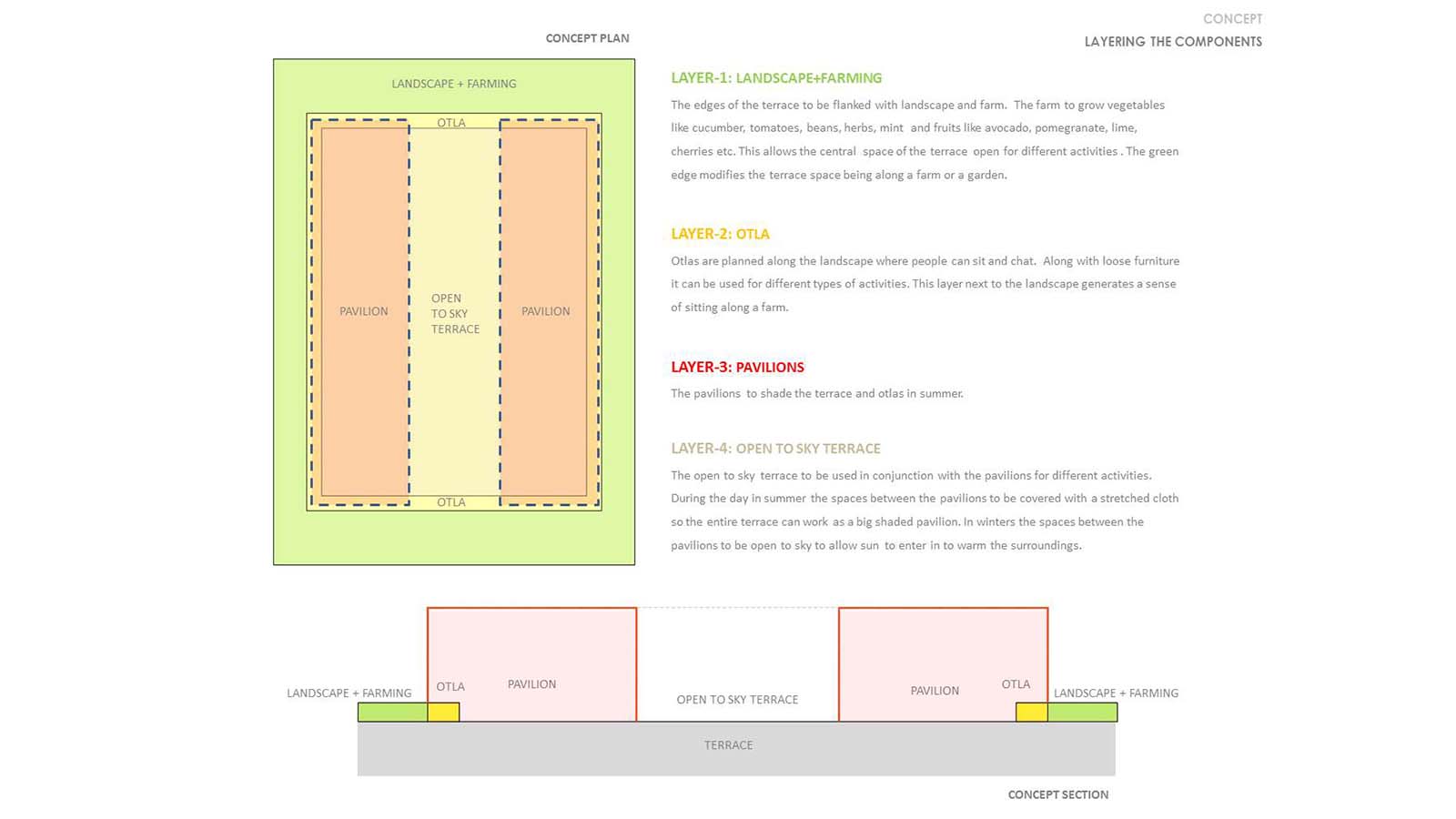
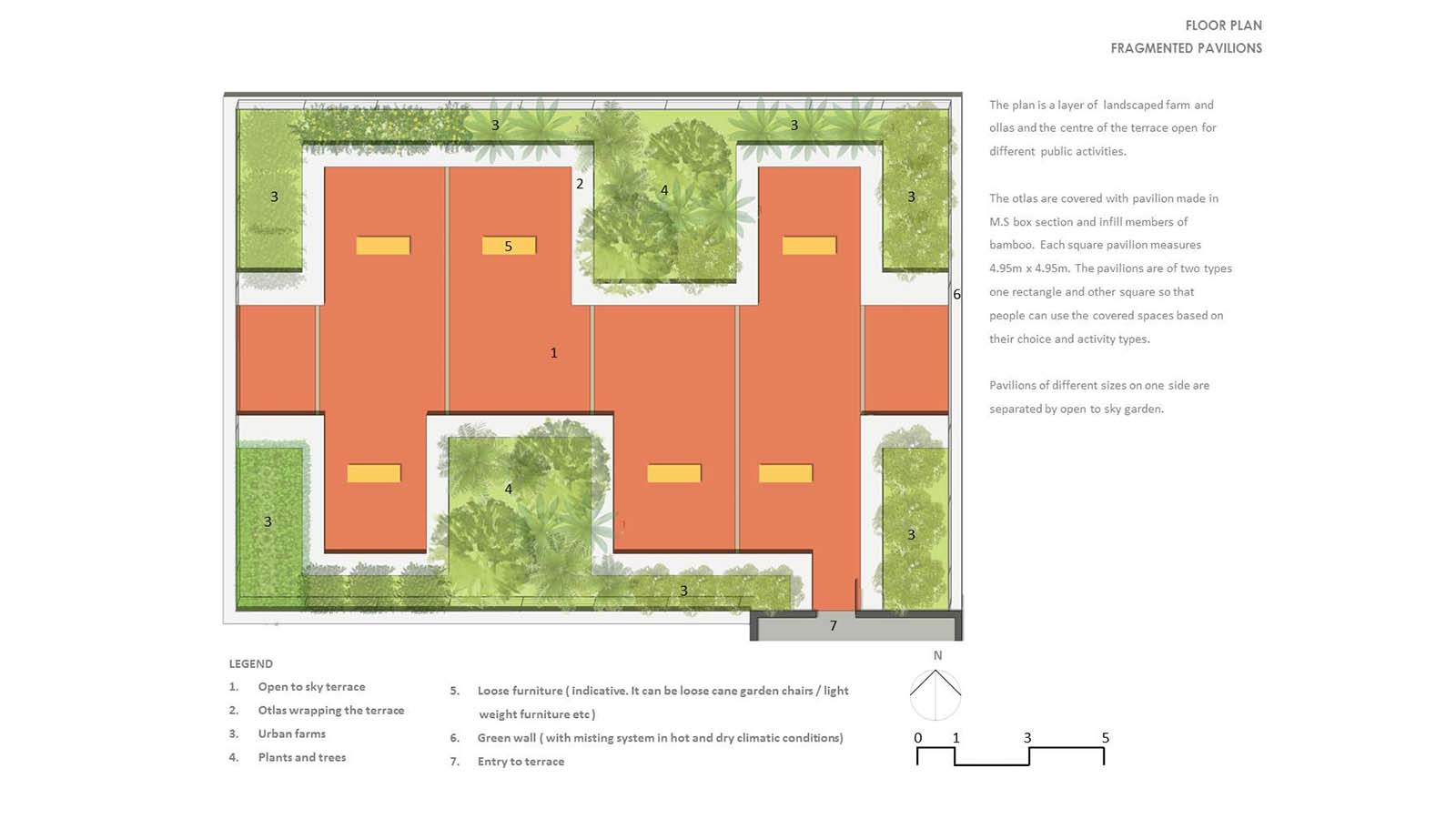
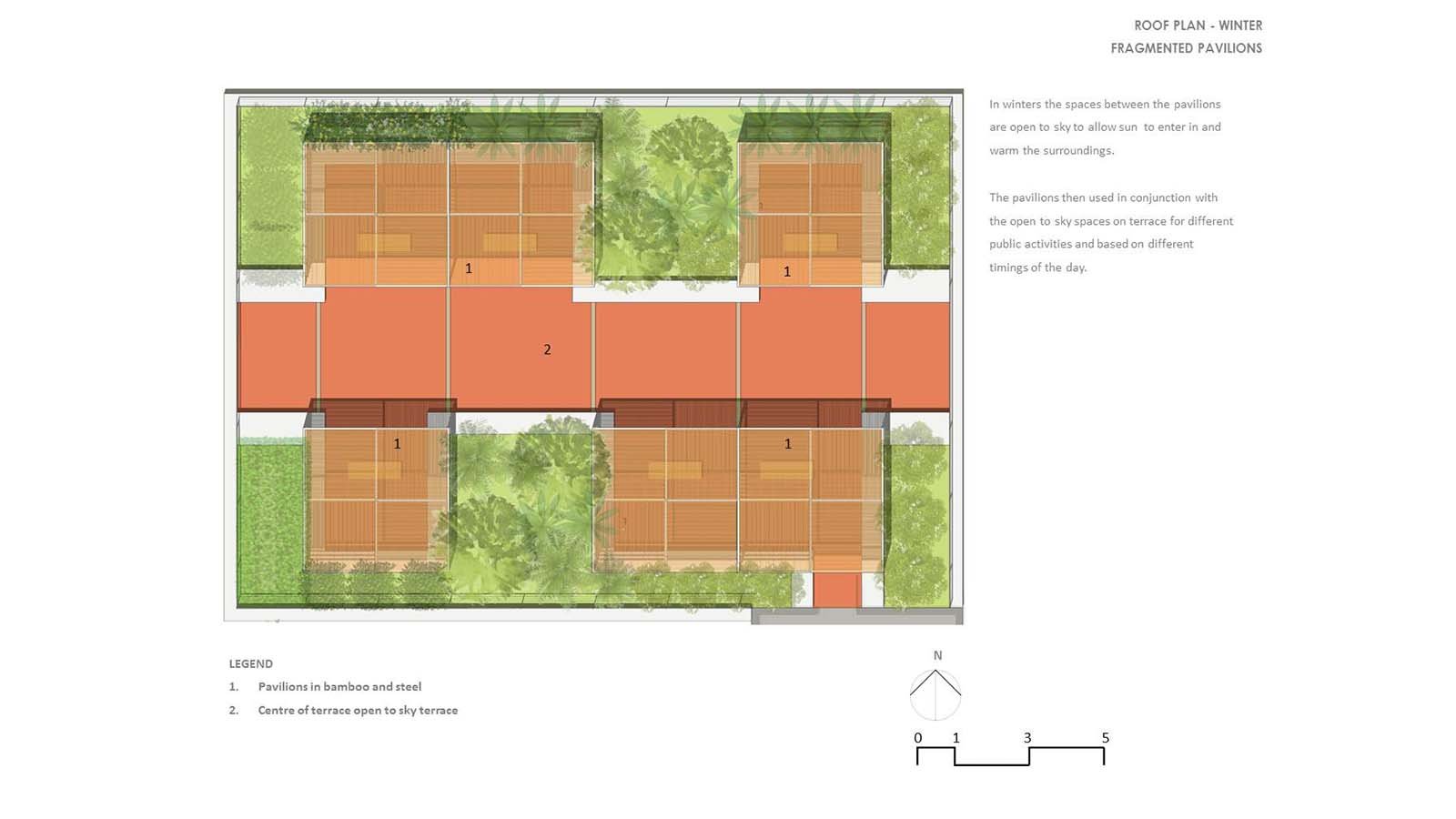
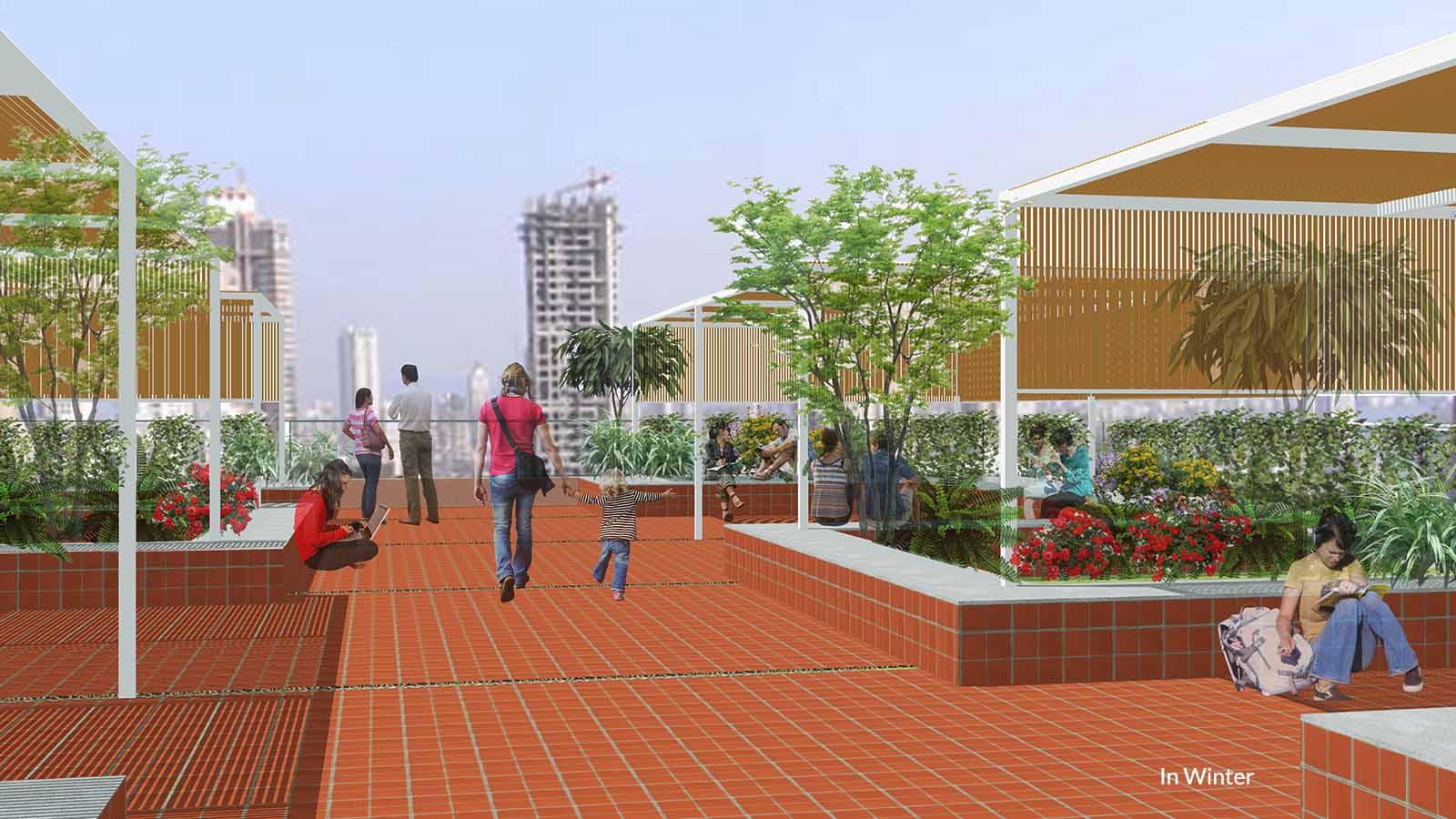
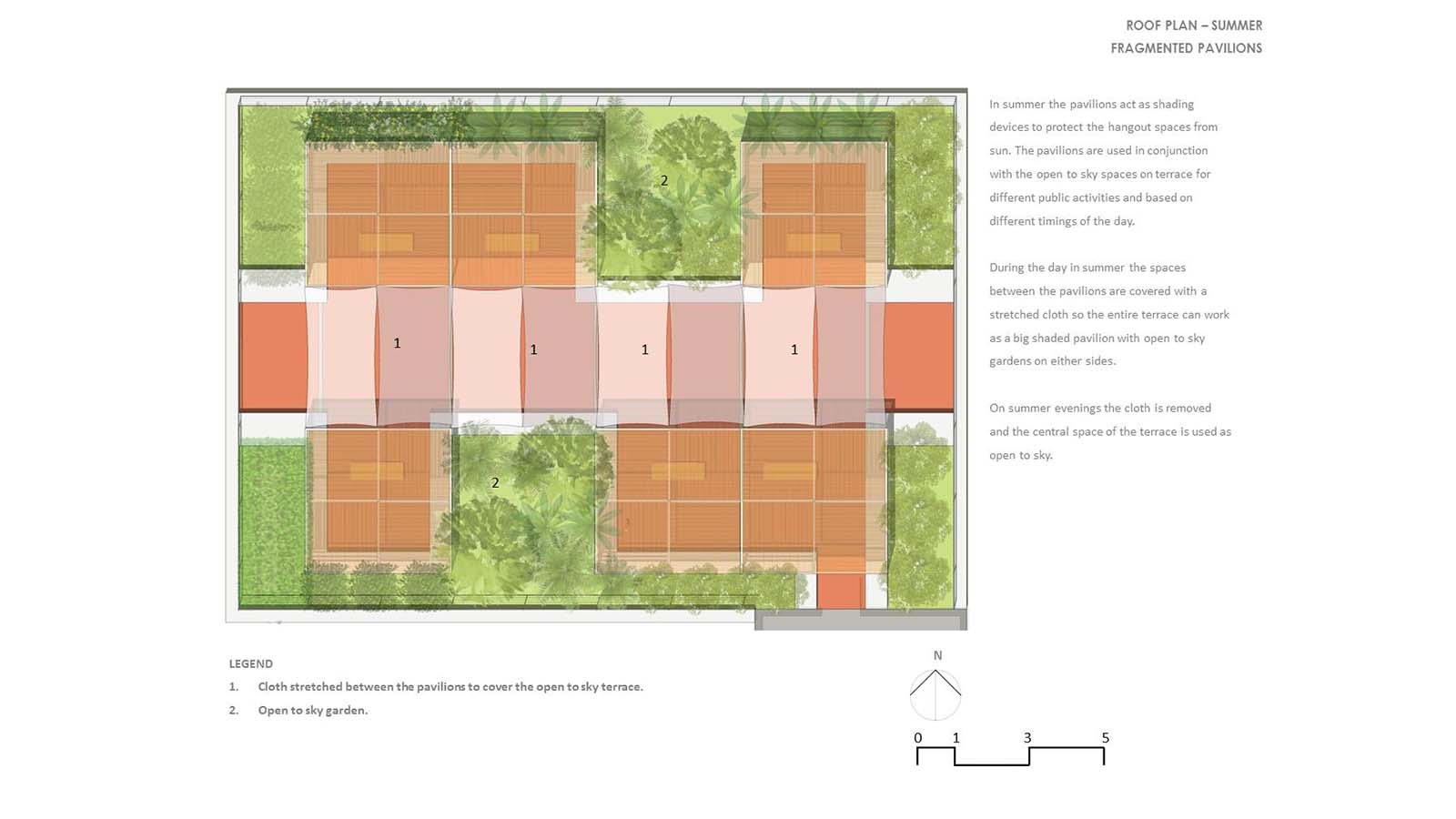

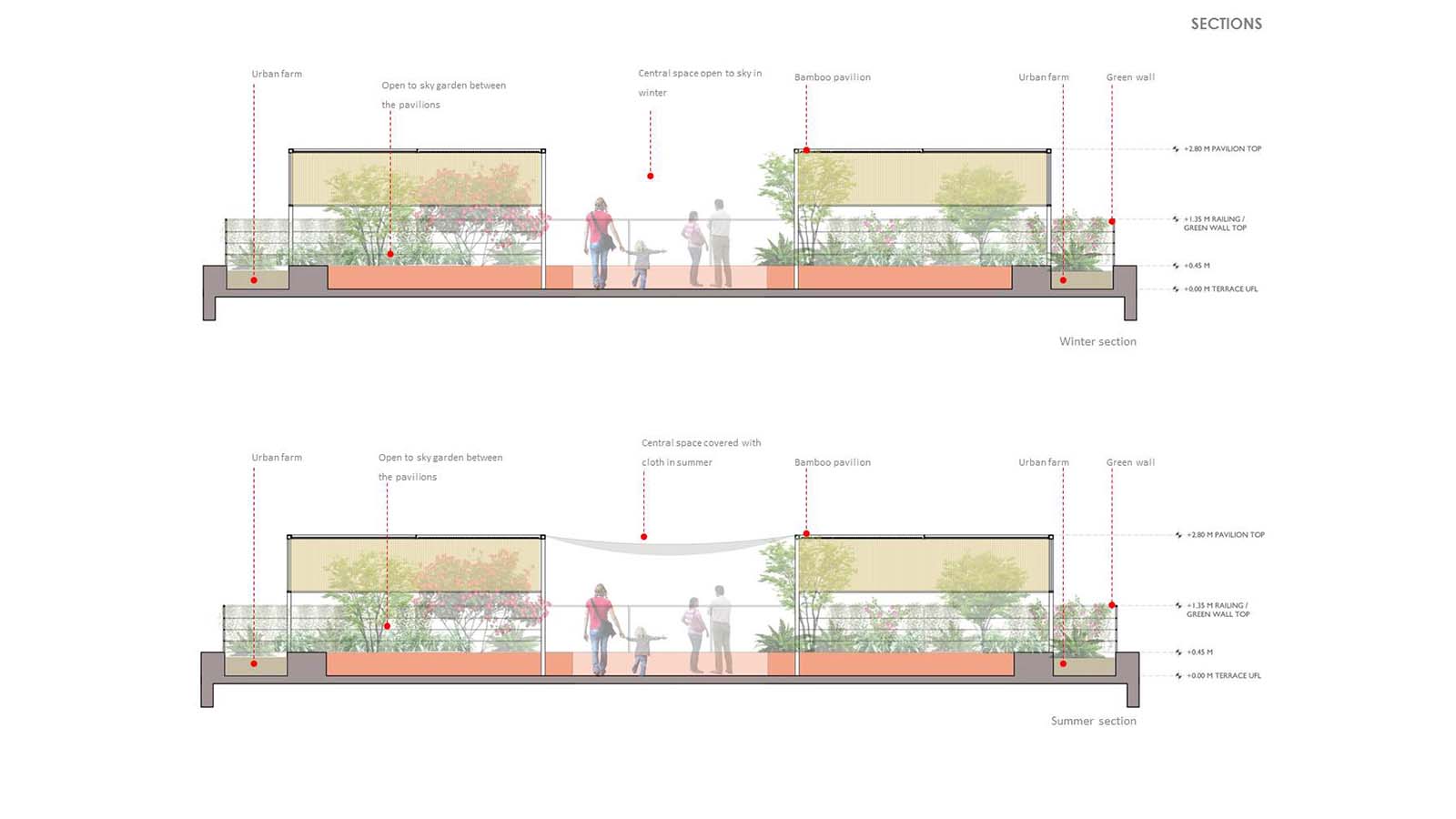
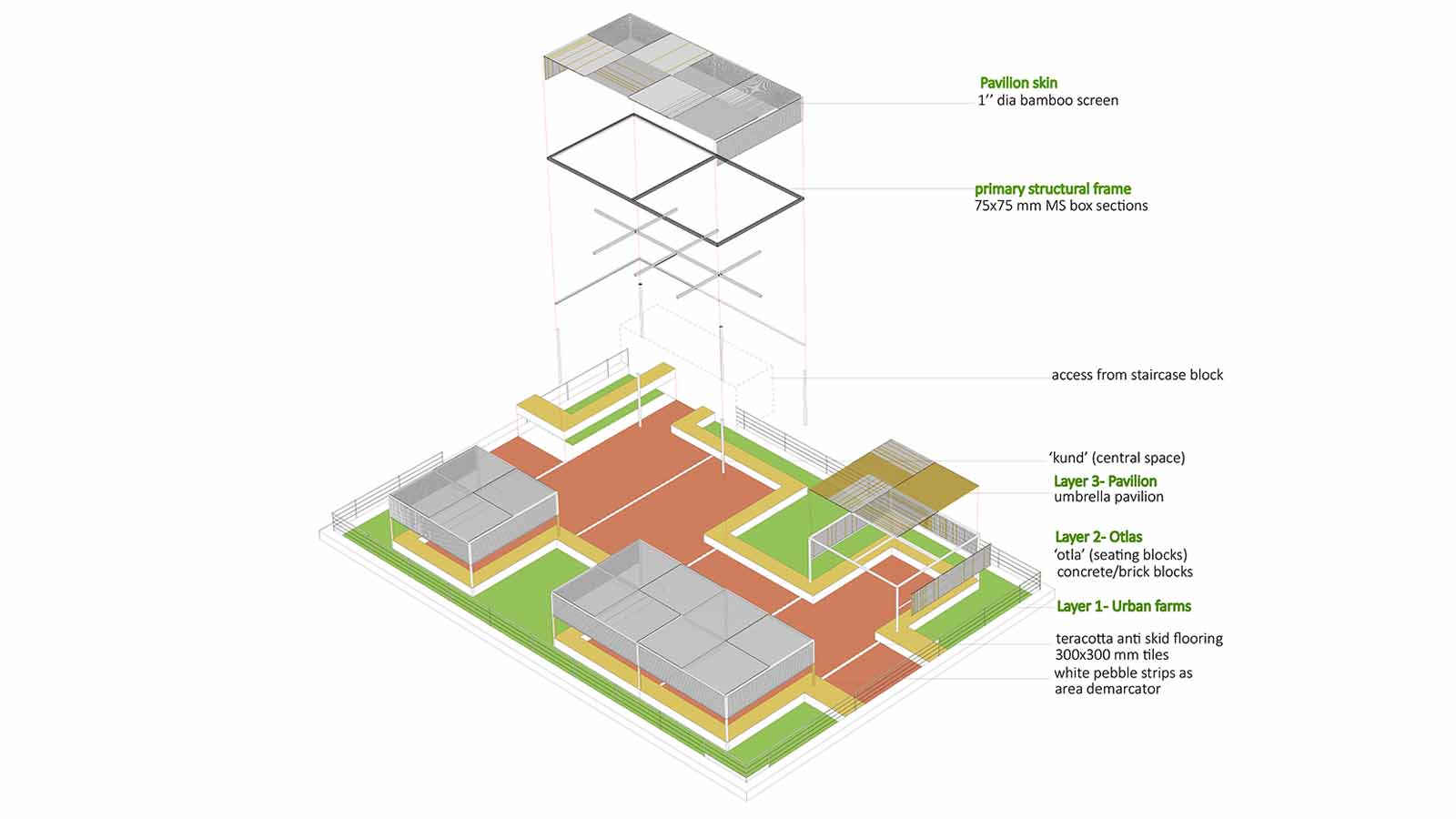



‘To walk away from the cacophony of the city and step into a green haven is the dream.’
The Mumbai in our memories consists of grainy photographs of close knit connected neighbourhoods and the noisy but dainty running balconies of ‘chawls’ where sharing your lives with your neighbour over a cup of tea was still in vogue. The illustrious ‘low rise’ community housing setups at the Dadar/Colaba Parsi colonies, Girgaum and Thakurdwar still stand testimony to a fading era of intimate conversations at the ‘katta’. The ‘urban’ no longer personifies any domestic attributes. The city invites all, but can nurture none. The qualities of urban living patterns that oscillate between economic extremities (rich or none) are at an all-time low. Sweeping urbanisation has seen proliferations of forms too high to assess and roads too congested to progress. Today we ‘self’ compensate the disappearing greens by a farcical application of Le Corbusier’s concept of ‘replacing ground greens to the roof. This is achieved by introduction of the podium (almost all of which function as parking shelters). Interventions for vertical urban connections and terraces have seen extensive application in high end Singaporean, Japanese and European markets. In an emerging economy, it needs a least intrusive and resource efficient application.
The proposal explores the primitive concept of a ‘home’ to address the evolution of social spaces within and outside the dwelling- the courtyard, the verandah, the barsati, elements that are inextricably linked to houses in the Asian subcontinent. Elements which, in a tropical climate, prevents the built form from getting too hot during summers or too cold during winters. It looks at the traditional low rise setup as an opportunity to integrate a living fabric across a limited network of 10 blocks to form a ‘comm-unit’. The smaller fractals can multiply and adapt to a larger format. The units draw from the wisdom of the Mughals to create adaptable ‘summer’ and ‘winter’ sections, grow their own greens and ‘create’ space-both physical and metaphysical for a city that is deprived of both. It goes back to the A-B-C’s of an architectural section, simplifies indigenous material palette and a ‘self-sustaining’ module for a dynamic public realm.
katta* : a street corner with a bench and preferably in proximity to a tea stall
